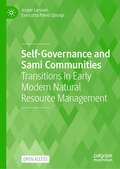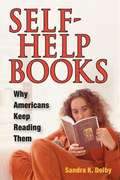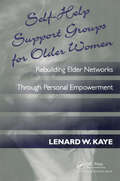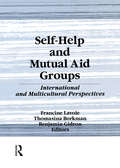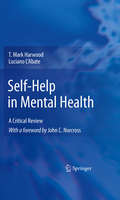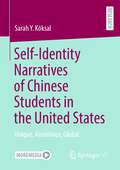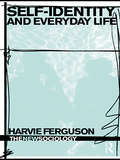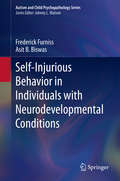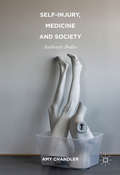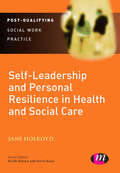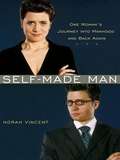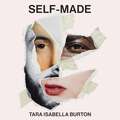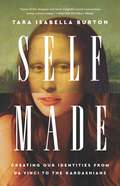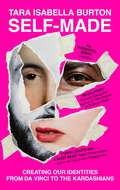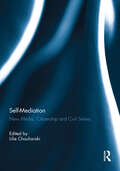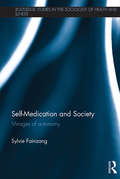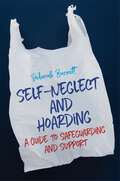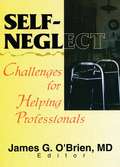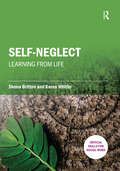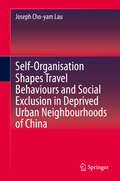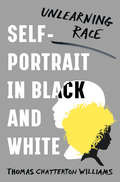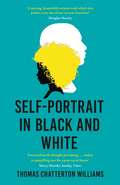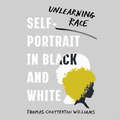- Table View
- List View
Self-Governance and Sami Communities: Transitions in Early Modern Natural Resource Management
by Jesper Larsson Eva-Lotta Päiviö SjaunjaThis open access book uses an interdisciplinary approach that not only focuses on social organization but also analyzes how societies and ecological settings were interwoven. How did early modern indigenous Sami inhabitants in interior northwest Fennoscandia build institutions for governance of natural resources? The book answers this question by exploring how they made decisions regarding natural resource management, mainly with regard to wild game, fish, and grazing land and illuminate how Sami users, in a changing economy, altered the long-term rules for use of land and water in a self-governance context. The early modern period was a transforming phase of property rights due to fundamental changes in Sami economy: from an economy based on fishing and hunting to an economy where reindeer pastoralism became the main occupation for many Sami. The book gives a new portrayal of how proficiently and systematically indigenous inhabitants organized and governed natural assets and how capable they were in building highly functioning institutions for governance.
Self-Help Books: Why Americans Keep Reading Them
by Sandra K. DolbyBased on a reading of more than three hundred self-help books, Sandra K. Dolby examines this remarkably popular genre to define "self-help" in a way that's compelling to academics and lay readers alike. Self-Help Books also offers an interpretation of why these books are so popular, arguing that they continue the well-established American penchant for self-education, articulate problems of daily life and supposed solutions for them, and present their content in an accessible rather than arcane form and style. Using methods associated with folklore studies, Dolby then examines how the genre makes use of stories, aphorisms, and a worldview that is at once traditional and contemporary. The overarching premise of the study is that self-help books, much like fairy tales, take traditional materials, especially stories and ideas, and recast them into extended essays that people happily read, think about, try to apply, and then set aside when a new embodiment of the genre comes along.
Self-Help Support Groups For Older Women: Rebuilding Elder Networks Through Personal Empowerment
by Lenard W. KayeThis work is based upon a research study whose purpose was to collect new information about the special benefits and drawbacks of formal organizations' efforts at social network building for older women. In it, a two-tiered investigation was carried out: a national review of a select group of model self-help support programmes for older women throughout the United States; and an in-depth community case study of a nationally recognized model program of self-help support groups, leadership training, networking and community outreach/education for older women. It provides the research-oriented reader with scientific evidence to assess the relative efficacy of self-help group programming.
Self-Help and Mutual Aid Groups: International and Multicultural Perspectives
by Benjamin Gidron Francine LavoieHere is new information on the development of international and intercultural research on self-help groups. This book reflects the many developments which have occurred in the field over the past decade, emphasizing empirical research. Self-Help and Mutual Aid Groups provides specific research findings and honed concepts to help health professionals learn more about self-help groups and work effectively with such groups. More countries and ethnic groups are now involved in the self-help movement, and this volume increases knowledge of how different cultures react to and participate in self-help mutual aid and how self-help groups can be adapted to fit different racial or ethnic populations. Self-Help and Mutual Aid Groups explores the definition of self-help, the centrality of culture as a major factor explaining variability in self-help, the development of appropriate methodological tools, and the role and involvement of professionals. It brings together different traditions of research for the study of cross- and intercultural and inter- and intraorganizational aspects of self-help groups. Contributors who represent various disciplines, including psychology, sociology, social work, and nursing, discuss: a paradigm for research in self-help the development of self-help groups in Japan, Hong Kong, and the former East Germany the participation of blacks in Alcoholics Anonymous the participation of Mexican Americans in groups for parents of the mentally ill relationships between self-help groups and health professionals predictors of burnout in self-help group leaders characteristics of effective groups ways individuals change their world view through self-help participationSelf-Help and Mutual Aid Groups is an informative and helpful resource for self-help researchers and teachers, students, and professionals who want to be more effective in their work with self-help groups across cultural and national lines.
Self-Help in Mental Health
by T. Mark Harwood Luciano L'AbateThey're fast, cheap, and promise amazing results--no wonder more people seek mental health advice from self-help books and sites rather than seeking therapy. Complicating this picture: many resources are inappropriate, ineffective, even dangerous. For the clinicians who would gladly recommend self-help for their clients, the challenge is finding reliable, evidence-based sources of help among the vast quantities available. Self-Help in Mental Health: A Critical Review guides readers through this plethora of materials, organizing it into useful order, evaluating popular approaches and trends, and recommending clinically valid, science-based resources for specific clinical and sub-clinical problems. Its authors explain how and why such methods work, offering innovative uses for self-help in prevention and promotion, therapy and rehabilitation, including strengthening therapeutic gains (akin to homework in cognitive-behavioral therapy) and encouraging self-reliance. While some may be tempted to write-off all self-help as quackery or therapy-lite, Harwood and L'Abate recognize the potential the self-help movement holds for countering the stigma associated with mental health treatments. Further, self-help resources represent a viable means of reaching under-served populations, and, for some individuals, they are preferable to conventional therapy. Included in the coverage: Recommendations for books, web sites, organizations, support groups, hotlines, and audio-visual materials, depression, anxiety, eating disorders, addictions, and other conditions, guidelines for evaluating self-help and guided self-support materials, strategies for integrating self-help with traditional modes of therapy, assessment tools for determining client appropriateness for self-help, new directions in theories of self-help and self-change, contraindications for self-help approaches. Concise and comprehensive, Self-Help in Mental Health is timely reading that will enhance the work of psychotherapists and family and couples therapists, as well as researchers in clinical psychology, psychiatry, and other mental health fields.
Self-Identity Narratives of Chinese Students in the United States: Unique, Ambitious, Global
by Sarah Y. KöksalWhile previous research has explored the academic adaptation or acculturation processes of Chinese students studying abroad, limited attention has been paid to students’ own perspectives and narrations of their experience. To contribute to a more nuanced understanding of this highly mobile group, this study takes a closer look at the students’ self-identity narratives. How do they make sense of their foreign adventure? How do they position themselves among their peers and their family members, as well as within the greater transnational context? Based on 29 in-depth, biographical interviews with Chinese students in the United States, the findings show the participants’ continuously interpreting and revising their individual, academic, and cultural identities. In the familial context, a recurring narrative of the high-potential only-child could be observed. Many students (and their family members) felt that their unique talents and personalities were not appreciated within the Chinese educational system and thus sought more holistic environments abroad.
Self-Identity and Everyday Life (The New Sociology)
by Harvie Ferguson'Identity' and 'selfhood' are terms routinely used throughout the human sciences that seek to analyze and describe the character of everyday life and experience. Yet these terms are seldom defined or used with any precision, and scant regard is paid to the historical and cultural context in which they arose, or to which they are applied. This innovative book provides fresh historical insights in terms of the emergence, development, and interrelationship of specific and varied notions of identity and selfhood, and outlines a new sociological framework for analyzing it.This is the first historical/sociological framework for discussion of issues which have until now, generally been treated as 'philosophy' or 'psychology', and as such it is essential reading for those undergraduates and postgraduates of sociology, philosophy and history and cultural studies interested in the concepts of identity and self. It covers a broader range of material than is usual in this style of text, and includes a survey of relevant literature and precise analysis of key concepts written in a student-friendly style.
Self-Injurious Behavior in Individuals with Neurodevelopmental Conditions (Autism and Child Psychopathology Series)
by Frederick Furniss Asit B. BiswasThis book addresses self-injurious behavior (SIB) in individuals with various neurodevelopmental conditions (NDCs). It takes a cross-NDC perspective that synthesizes recent research on variability in incidence and presentation across NDCs and the natural history and neurobiology of SIB. Chapters examine implications for biobehavioral definitions of subtypes of SIB and provide a detailed guide to assessment and intervention using an integrated research-based model for individualized treatment. In addition, chapters present a practice-focused structure using case studies to illustrate clinical implications of research findings. The book concludes with a discussion of current directions in research and their potential to guide innovation in prevention and treatment of SIB.Topics featured in this handbook include:· Self-restraint among individuals who self-injure.· Self-injurious behavior in individuals with autism spectrum conditions.· Assessing and managing short-term effects of SIB.· Reducing risk of, and responding to, relapse following successful intervention with SIB.· Ethical issues associated with working with people who engage in self-injurious behaviors.Self-Injurious Behavior in Individuals with Neurodevelopmental Conditions is a must-have resource for researchers, clinicians and practitioners as well as graduate students in the fields of clinical child and school psychology, applied behavior analysis, pediatrics, social work, developmental psychology, behavioral therapy/rehabilitation, child and adolescent psychiatry, clinical psychology and psychiatry of adult intellectual disability, and special education.
Self-Injury, Medicine and Society
by Amy ChandlerThis book provides an appreciative, sociological engagement with accounts of the embodied practice of self-injury. It shows that in order to understand self-injury, it is necessary to engage with widely circulating narratives about the nature of bodies, including that they are separate from, yet containers of 'emotion'. Using a sociological approach, the book examines what self-injury is, how it functions, and why someone might engage in it. It pays close attention to the corporeal aspects of self-injury, attending to the complex ways in which 'lived experience' is narrated. By interrogating the way in which healthcare and psychiatric systems shape our understanding of self-injury, Self-Injury, Medicine and Society aims to re-invigorate traditional discourse on the subject. Combining analytical theory with real-life accounts, this book provides an engaging study which is both thought-provoking and informative. It will appeal to an interdisciplinary readership and scholars in the fields of medical sociology and health studies in particular.
Self-Leadership and Personal Resilience in Health and Social Care (Post-Qualifying Social Work Leadership and Management Handbooks)
by Jane HolroydThis is essential reading for professionals making judgements under pressure. It demonstrates how self-leadership is not only about surviving but thriving in a continually changing environment and introduces key theories, skills and debates to help professionals deliver high quality professional practice every day. The book focuses in on the quality of professional thinking, self- and social awareness, self-regulation and self-management, and the fundamentals of sustained resilience.
Self-Leadership and Personal Resilience in Health and Social Care (Post-Qualifying Social Work Leadership and Management Handbooks)
by Jane HolroydThis is essential reading for professionals making judgements under pressure. It demonstrates how self-leadership is not only about surviving but thriving in a continually changing environment and introduces key theories, skills and debates to help professionals deliver high quality professional practice every day. The book focuses in on the quality of professional thinking, self- and social awareness, self-regulation and self-management, and the fundamentals of sustained resilience.
Self-Made Man
by Norah VincentA journalist's provocative and spellbinding account of her eighteen months spent disguised as a man Norah Vincent became an instant media sensation with the publication of Self-Made Man, her take on just how hard it is to be a man, even in a man's world. Following in the tradition of John Howard Griffin (Black Like Me), Norah spent a year and a half disguised as her male alter ego, Ned, exploring what men are like when women aren't around. As Ned, she joins a bowling team, takes a high-octane sales job, goes on dates with women (and men), visits strip clubs, and even manages to infiltrate a monastery and a men's therapy group. At once thought- provoking and pure fun to read, Self-Made Man is a sympathetic and thrilling tour de force of immersion journalism. .
Self-Made Man: One Woman's Journey into Manhood and Back
by Norah VincentA journalist's observations on her time living as a man.
Self-Made: Creating Our Identities from Da Vinci to the Kardashians
by Tara Isabella BurtonAn exceptional history of ideas and a contemporary critique on the story of self-making: from the Renaissance to the present dayToday's defining celebrities have crafted public personae that walk the tightrope between authenticity and artificiality. Ordinary people now follow suit: lovingly tending our 'personal brands' for economic gain and self-expression alike.Instagram culture is part of a story that goes back centuries. The vision that we not only can but should 'make' our own selves to shape our own destiny is an inextricable part of the formation of the modern world.As traditional powers of pre-modernity - church and throne - waned, a new myth took their place: that of the 'self-made man', whose unique powers of personality - or canny self-presentation - give him not just the opportunity, but the obligation, to remake reality in the image of what he wants it to be.From the Renaissance genius to the Regency dandy, the American prophets of capitalism to the aspirational übermensch of European fascism, Hollywood's Golden Age to today's Silicon Valley, Self-Made takes us on a dazzling tour of modern history's most prominent self-makers, uncovering both self-making's liberatory power, and the dangers this idea can unleash.'This funny, startling, insightful story of the selfie, from Dürer to the Kardashians, is a must read if you want to understand how we reinvent ourselves every time we reveal ourselves' PETER POMERANTSEV'Self-Made is both revelatory and a warning about the ways that focus on the self distorts our individual lives and the broader society' FRANCIS FUKUYAMA(P) 2023 PublicAffairs
Self-Made: Creating Our Identities from Da Vinci to the Kardashians
by Tara Isabella BurtonAn exploration into the curation of the self in Western civilization from Da Vinci to Kim Kardashian.In a technologically-saturated era where nearly everything can be effortlessly and digitally reproduced, we're all hungry to carve out our own unique personalities, our own bespoke personae, to stand out and be seen. As the forces of social media and capitalism collide, and individualism becomes more important than ever across a wide array of industries, "branding ourselves" or actively defining our selves for others has become the norm. Yet, this phenomenon is not new. In Self-Made, Tara Isabella Burton shows us how we arrived at this moment of fervent personal-branding.As attitudes towards religion, politics and society evolved, our sense of self did as well, moving from a collective to individual mindset. Through a series of chronological biographical essays on famous (and infamous) "self-creators" in the modern Western world, from the Renassiance to the Enlightenment to modern capitalism and finally to our present moment of mass media, Burton examines the theories and forces behind our never-ending need to curate ourselves. Through a vivid cast of characters and an engaging mix of cultural and historical commentary, we learn how the personal brand has come to be.
Self-Made: Creating Our Identities from Da Vinci to the Kardashians
by Tara Isabella Burton'We're all now self-makers, whether we like it or not - and this witty, sceptical book is the thought-provoking story of how we got here' GUARDIAN'This funny, startling, insightful story of the selfie, from Dürer to the Kardashians, is a must read if you want to understand how we reinvent ourselves every time we reveal ourselves' PETER POMERANTSEVToday's defining celebrities have crafted public personae that walk the tightrope between authenticity and artificiality. Ordinary people now follow suit: lovingly tending our 'personal brands' for economic gain and self-expression alike.Instagram culture is part of a story that goes back centuries. The vision that we not only can but should 'make' our own selves to shape our own destiny is an inextricable part of the formation of the modern world.As traditional powers of pre-modernity - church and throne - waned, a new myth took their place: that of the 'self-made man', whose unique powers of personality - or canny self-presentation - give him not just the opportunity, but the obligation, to remake reality in the image of what he wants it to be.From the Renaissance genius to the Regency dandy, the American prophets of capitalism to the aspirational übermensch of European fascism, Hollywood's Golden Age to today's Silicon Valley, Self-Made takes us on a dazzling tour of modern history's most prominent self-makers, uncovering both self-making's liberatory power, and the dangers this idea can unleash.'Both revelatory and a warning about the ways that focus on the self distorts our individual lives and the broader society' FRANCIS FUKUYAMA
Self-Mediation: New Media, Citizenship and Civil Selves
by Lilie ChouliarakiBlogs, You Tube, citizen journalism, social networking sites and museum interactivity are but a few of the new media options available for ordinary people to express themselves in public. This intensely technological presentation of everyday lives in our public culture is today hailed as a new, playful form of citizenship that enhances democratic participation and cosmopolitan solidarity. But is this celebration of self- mediation justified or premature? Drawing on a view of self-mediation as a pluralistic practice that potentially enhances our democratic public culture but which is, at the same time, closely linked to the monopolistic interests of the market, this volume critically explores the dynamics of mediated self-representation as an essentially ambivalent cultural phenomenon. It is, the volume argues, the hybrid potential for increased democratization but also for subtler social control, inherent in the public visibility of the ordinary, which ultimately defines contemporary citizenship. The volume is organized along two-dimensions, which conceptualize the dialectical relationship between new media and the participatory practices these enable in terms of, what Foucault calls, a dual economy of freedom and constraint (Foucault 1982). The first dimension of the dialectic, the ‘democratization of technology’ , addresses self-mediation from the perspective of the empowering potential of new technologies to invent novel discourses of counter-institutional resistance and activism (individual or collective); the second dimension, the ‘technologization of democracy’, addresses self-mediation from the perspective of the regulative potential of new technologies to control the discourses and genres of ordinary participation and, in so doing, to reproduce the institutional power relations that such participation seeks to challenge. This book was originally published as a special issue of Critical Discourse Studies.
Self-Medication and Society: Mirages of Autonomy
by Sylvie FainzangThe question of recourse to self-medication arises at the intersection of two partly antagonistic discourses: that of the public authorities, who advocate the practice primarily for economic reasons, and that of health professionals, who condemn it for fear that it may pose a danger to health and dispossess the profession of expertise. This books examines the reality of self-medication in context and investigates the social treatment of the notion of autonomy ever present in the discourses promoting this practice. Drawing on fieldwork conducted in France, the author examines the material, cognitive, symbolic and social dimensions of the recourse to self-medication, considering the motivations and practices of the subjects and what these reveal about their relationship with the medical institution, while addressing the question of open access to medicines – a subject of heated debate between the actors concerned on themes such as competence, knowledge and responsibility. A rigorous analysis of the strategies adopted by individuals to manage the risks of medicines and increase their efficacy, Self-Medication and Society will appeal to sociologists and anthropologists with interests in health, illness, the body and medicine.
Self-Neglect and Hoarding: A Guide To Safeguarding And Support
by Deborah BarnettSelf-neglect and hoarding is present in 1 of 5 social work cases in mental health and older people's services. These cases can be the most alarming and challenging on a social worker's caseload. A skilled, thorough risk assessment of the behaviours of self-neglect is needed in order to ensure effective care and support is available. This guide offers practical and applicable tools and solutions for all professionals involved in working with people who self-neglect. It includes tips for assessment and decision-making in the support process, and updates following the implementation of the Care Act 2014, which deemed self-neglect a safeguarding matter.
Self-Neglect: Challenges for Helping Professionals
by James G O'BrienUnderstand the complex ethical, legal, medical, and psychological issues of the most common form of elder abuse!Self-Neglect examines the social, ethical, medical, and practical implications of the most prevalent form of elder abuse. It can be difficult to diagnose and treat, and it poses ethical questions that cannot be answered simply. Yet it is so common and so destructive that anyone who works with geriatric patients must come to terms with it. Everyone is familiar with the image of the wild-haired elderly recluse hoarding junk in a dilapidated house, but to their neighbors, friends, and family--as well as to the health care professionals, social workers, and clergy who deal with them--these recluses are a special burden. They often refuse care despite such obvious problems as open sores. They tend to be intelligent and independent. Do they have the right to choose to live in squalor, or are their choices dictated by depression or other diseases? Do health care professionals have a responsibility to treat them against their will or a duty to respect their stated preferences?Self-Neglect examines the topics of passive suicide and indirect life-threatening behavior to help medical practitioners working with the elderly understand why patients do not follow doctor's orders or take care of themselves. Through case studies, this informative book explores the ways in which patients practice self-neglect by ignoring their doctors’advice, extreme lack of self-care, refusal to eat, failure to take their prescribed medication, and alcohol abuse. Self-Neglect offers insight into many facets of this condition, including:choosing among the many definitions of self-neglect what kinds of people become self-neglecting managing self-neglecting patients when and how to intervene the patient's autonomy and personal rights versus the rights of the community self-neglect as a way to gain control of a negative life situation when other tactics have failedDiscussing the sometimes tragic outcome of misdiagnosing self-neglect or leaving it untreated, this intelligent book will help you identify and understand this dangerous behavior and offer your patients better care for this condition.
Self-Neglect: Learning from Life (Critical Skills for Social Work)
by Shona Britten Karen WhitbyA practice-based perspective on working with people who self-neglect. This book explores the issues and situations which can arise and helps practitioners to adopt a strengths-based “Learning from Life” approach in the translation of MSP principles to practical implementation. Self-neglect: Learning from Life helps frontline practitioners ensure that Making Safeguarding Personal (MSP) is an everyday reality. Using two case scenarios, the authors examine issues and practice-based situations which arise in the daily application of MSP to casework with adults. The scenarios demonstrate lifespan and experience issues in the adoption of MSP as person-centred and person-led practice with people who self-neglect. The statutory principles of Empowerment, Prevention, Proportionality, Protection, Partnership, and Accountability are also translated into practical language and their meaning and implications are unpacked.This journey from principles to practical implementation uses a suite of clear and concise practice focused resources which adopt a person-centred, relationship-based approach to all conversations, interventions and aspects of practice. The resources include: a range from SnapShots on…- a selection of relevant topic areas in work with adults at risk through their safeguarding journey practice-based tools for practitioners to use in the quality monitoring of their own casework Taking it Further” referencing and suggested sources of more information. This invaluable book fills a gap that currently exists in the practical application of the statutory MSP principles as part of a “life-span approach” to work with people who self-neglect. It minimises the risks associated with “siloed” approaches to ensure the person is held at the centre of all interventions.
Self-Organisation Shapes Travel Behaviours and Social Exclusion in Deprived Urban Neighbourhoods of China
by Joseph Cho-yam LauThis book investigates the influence of self-organisation processes on the commuting of the poor workers in urban China. It suggests a new approach to investigate and measure individual access, and it argues that dynamic interactions between individual action and social structure influence individual’s access to transport, which cannot be measured using other traditional accessibility approaches.The overwhelming majority of models in transport research assume that socio-economic factors and the built-environment influence the accessibility of transport for individuals. This book provides evidence that individual decision-makings and actions are also vital factors to bring out changes in accessibility. Further, the study adopts a self-organisation process and structuration theory to illustrate that a significant proportion of travel problems of migrants are rooted in the interaction between actions and social structures. Any change in migrants’ actions or social structures in the self-organisation process would result in the production of complex and spontaneous travel behaviour. The self-organisation approach presented provides a new approach for urban transport planning in the future, particularly on the investigation of the accessibility of disadvantaged social groups. By using the social theories, transport research can have an effect on commuting behaviour and to improve poor workers’ quality of life.
Self-Portrait in Black and White: Unlearning Race
by Thomas Chatterton WilliamsA meditation on race and identity from one of our most provocative cultural critics. A reckoning with the way we choose to see and define ourselves, Self-Portrait in Black and White is the searching story of one American family’s multigenerational transformation from what is called black to what is assumed to be white. Thomas Chatterton Williams, the son of a “black” father from the segregated South and a “white” mother from the West, spent his whole life believing the dictum that a single drop of “black blood” makes a person black. This was so fundamental to his self-conception that he’d never rigorously reflected on its foundations—but the shock of his experience as the black father of two extremely white-looking children led him to question these long-held convictions. It is not that he has come to believe that he is no longer black or that his kids are white, Williams notes. It is that these categories cannot adequately capture either of them—or anyone else, for that matter. Beautifully written and bound to upset received opinions on race, Self-Portrait in Black and White is an urgent work for our time.
Self-Portrait in Black and White: Unlearning Race
by Thomas Chatterton WilliamsA SUNDAY TIMES BOOK OF THE YEAR A TIME 'MUST-READ' 'An extraordinarily thought-provoking memoir that makes a controversial contribution to the fraught debate on race and racism . . . intellectually stimulating and compelling' SUNDAY TIMESA reckoning with the way we choose to see and define ourselves, Self-Portrait in Black and White is the searching story of one American family's multi-generational transformation from what is called black to what is assumed to be white. Thomas Chatterton Williams, the son of a 'black' father from the segregated South and a 'white' mother from the West, spent his whole life believing the dictum that a single drop of 'black blood' makes a person black. This was so fundamental to his self-conception that he'd never rigorously reflected on its foundations - but the shock of his experience as the black father of two extremely white-looking children led him to question these long-held convictions.It is not that he has come to believe that he is no longer black or that his daughter is white, Williams notes. It is that these categories cannot adequately capture either of them - or anyone else, for that matter. Beautifully written and bound to upset received opinions on race, Self-Portrait in Black and White is an urgent work for our time.
Self-Portrait in Black and White: Unlearning Race
by Thomas Chatterton WilliamsA reckoning with the way we choose to see and define ourselves, Self-Portrait in Black and White is the searching story of one American family's multi-generational transformation from what is called black to what is assumed to be white. Thomas Chatterton Williams, the son of a 'black' father from the segregated South and a 'white' mother from the West, spent his whole life believing the dictum that a single drop of 'black blood' makes a person black. This was so fundamental to his self-conception that he'd never rigorously reflected on its foundations - but the shock of his experience as the black father of two extremely white-looking children led him to question these long-held convictions.It is not that he has come to believe that he is no longer black or that his daughter is white, Williams notes. It is that these categories cannot adequately capture either of them - or anyone else, for that matter. Beautifully written and bound to upset received opinions on race, Self-Portrait in Black and White is an urgent work for our time.(P) 2019 Tantor Media Inc
